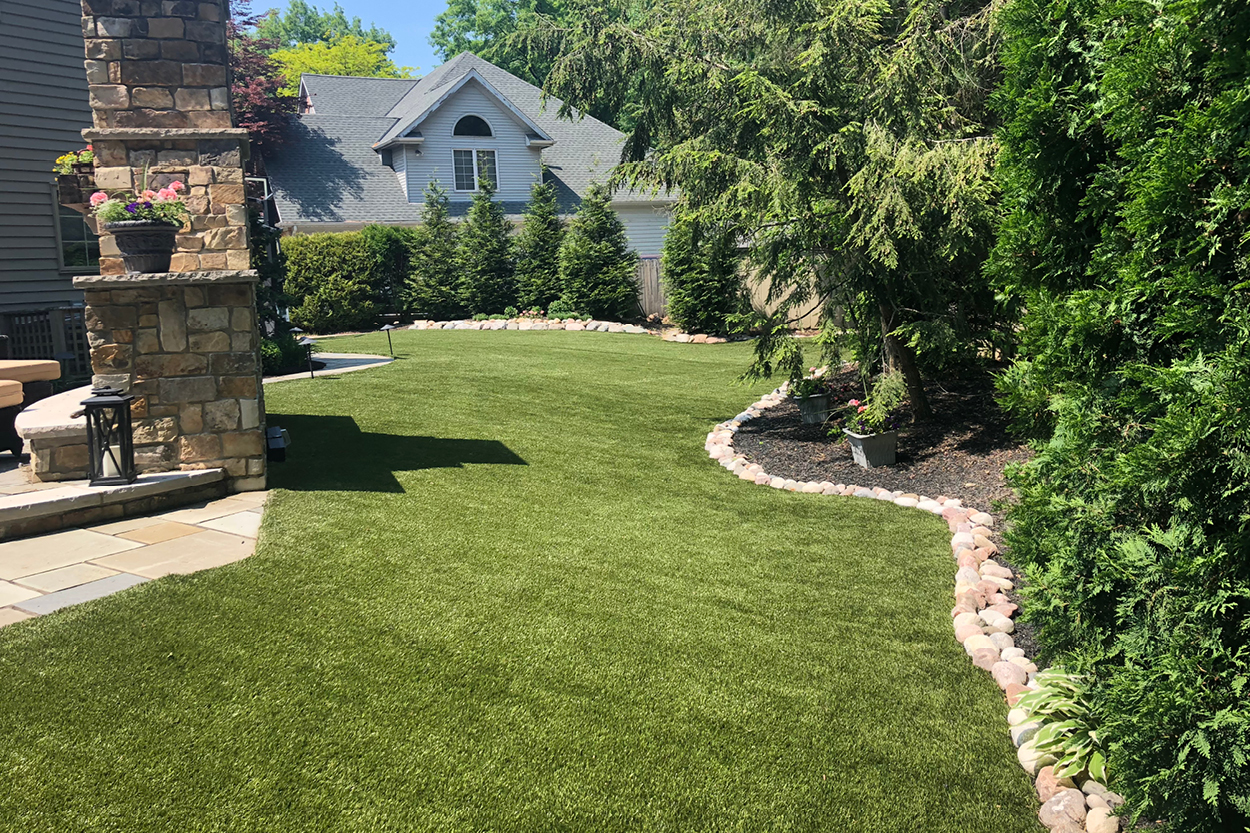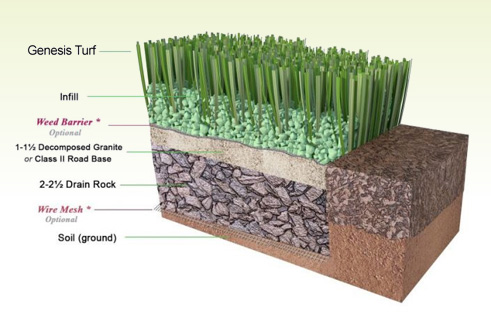Weather-Resistant Arizona Artificial Turf for Home and Business Applications
Weather-Resistant Arizona Artificial Turf for Home and Business Applications
Blog Article
Delve Into the Environmental Conveniences of Opting for Synthetic Grass Solutions
The adoption of man-made grass solutions offers a compelling opportunity to attend to pressing ecological challenges. By substantially lowering water usage and lessening the application of damaging chemicals, these options not just promote lasting landscaping however also secure local communities.
Water Conservation Perks
One of the most substantial advantages of man-made grass is its capacity to save water. In comparison, man-made turf does not require watering, substantially decreasing the general demand for water sources.
By eliminating the demand for regular watering, synthetic grass adds to sustainable landscape practices and assists mitigate the ecological effect of too much water intake. Furthermore, the conservation of water extends to the decrease of drainage, which can lead to soil disintegration and river air pollution.
In addition, the installation of fabricated grass allows municipalities and house owners to assign water resources more effectively, concentrating on essential usages such as alcohol consumption water and agriculture. The change towards synthetic grass not just promotes responsible water usage yet likewise straightens with broader ecological objectives targeted at maintaining natural sources.
As neighborhoods significantly focus on sustainability, the water preservation benefits of synthetic grass offer a compelling case for its adoption in business and domestic landscape design tasks.
Reduced Chemical Use
The shift to man-made grass considerably decreases the dependence on chemical therapies frequently used in natural turf maintenance. Typical turf monitoring usually involves the application of chemicals, fertilizers, and herbicides to advertise development and control insects. These chemicals can present risks to human health and wellness, local wild animals, and the atmosphere, adding to soil and water contamination.
In comparison, fabricated grass eliminates the requirement for these dangerous substances. Once set up, it requires marginal upkeep, mostly including normal cleaning and irregular infill replenishment. This reduction in chemical use not just benefits the prompt setting but also contributes to wider ecological security. By decreasing the release of artificial compounds into the ecological community, man-made turf promotes much healthier soil and water supply.
In addition, the lack of chemical drainage related to synthetic grass installments assists safeguard regional waterways from pollution, supporting aquatic life and preserving biodiversity. Turf installation phoenix az. As areas progressively focus on sustainable techniques, choosing fabricated turf presents a practical remedy that straightens with ecological conservation objectives. With this change, homeowner can appreciate rich environment-friendly rooms without compromising ecological health, leading the way for a much more lasting future
Lower Carbon Footprint

Furthermore, the installation of synthetic grass can lead to substantial water conservation. Natural yards need considerable amounts of water for watering, which not just includes to the carbon impact related to water removal and therapy but also strains regional water resources. In contrast, synthetic grass needs very little maintenance, requiring no watering, thereby significantly lowering water usage and its linked energy prices.
In addition, the long life of fabricated grass adds to its decreased carbon effect. With a lifespan of as much as 15 years or more, the demand for constant replacements is diminished, leading to much less waste and lower energy intake in production and disposing of typical lawn options. Generally, synthetic grass provides a sustainable alternative for eco aware landscaping.
Habitat Conservation
Habitat preservation is an important factor to consider in the debate over landscaping choices, specifically when contrasting fabricated grass to all-natural turf. Natural grass lawns commonly require considerable upkeep, including the use of plant foods, herbicides, and chemicals, which can negatively influence neighborhood communities. These chemicals can seep right into the dirt and rivers, hurting indigenous vegetation and animals and disrupting local habitats.
Synthetic lawn removes the need for unsafe chemicals, consequently securing close-by wildlife and maintaining the honesty of surrounding ecological communities. The installment of artificial grass can lead to the conversion of former turf locations click reference into even more biodiverse landscapes, such as pollinator gardens or indigenous plant locations, which can sustain neighborhood wild animals.
Ultimately, the transition to synthetic grass not just saves water and reduces maintenance initiatives yet likewise promotes a more unified relationship between human activities and the natural surroundings, promoting habitat preservation in the process.
Long-Term Sustainability
Long-term sustainability is an essential variable in evaluating the advantages of synthetic grass over typical lawn yards. Among the most significant benefits of artificial turf is its resilience; it can last up to 15-20 years with marginal upkeep, whereas all-natural turf needs frequent reseeding and substitute. This long life minimizes the need for consistent sources, such as water, fertilizers, and chemicals, which are essential for maintaining a healthy and balanced turf lawn.
In addition, artificial turf adds to a reduction in carbon exhausts connected with grass treatment tools. Conventional yards usually require gas-powered lawn mowers, trimmers, and blowers, all of which add to air pollution. Arizona artificial turf. In comparison, artificial grass gets rid of the need for such tools, promoting a cleaner setting
Additionally, the production of synthetic grass significantly makes use of recycled products, improving its sustainability account. As suppliers embrace environmentally friendly techniques, the ecological footprint of synthetic grass remains to diminish.

Verdict
The fostering of artificial lawn options offers significant environmental advantages, consisting of substantial water conservation, reduced dependence on harmful chemicals, and a reduced carbon impact. Fabricated turf aids in protecting all-natural habitats by minimizing land disruption and advertising long-term sustainability via the usage of sturdy products. Collectively, these elements emphasize the potential of synthetic grass to contribute positively to environmental health and wellness Discover More and offer a practical option to typical landscape design methods in a significantly resource-conscious world.
In go to my site comparison, man-made turf does not need watering, significantly minimizing the overall demand for water resources. By decreasing the release of artificial substances into the community, man-made lawn advertises healthier dirt and water systems.
Furthermore, the installation of synthetic grass can result in considerable water conservation. In contrast, man-made lawn needs very little upkeep, calling for no watering, thus dramatically lowering water usage and its associated energy costs.

Report this page